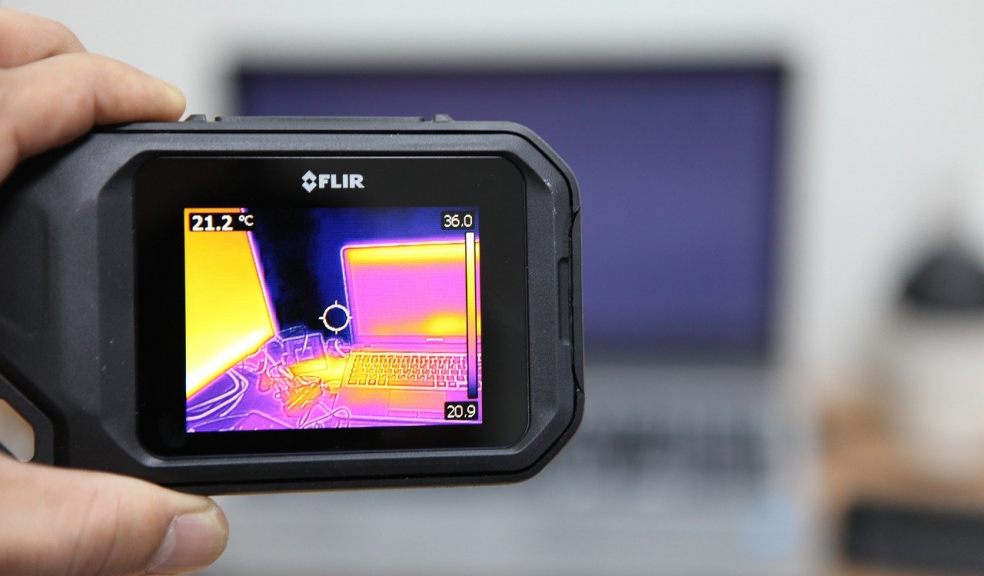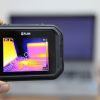
Can thermal cameras help spot Coronavirus?
The outbreak of the COVID-19 virus has given out a great challenge to worldwide resources and a race to adapt existing technologies and deploy and innovate new ones. The use of thermal imaging, in particular, has been in focus, with sales of infrared/thermal imaging cameras increasing dramatically.
Drones equipped with thermal cameras were also employed in Wuhan, China, the origin of the crisis, to monitor movement. Today, a number of portable thermal imaging devices are recently being emphasized for their likelihood to protect key workers. Each has slightly different usage models and capabilities, but all ultimately aim to flag possible victims of the virus by measuring body temperature with consequent reading. But can thermal cameras really work in detecting coronavirus?
How Do Thermal Cameras Work?
FLIR defined a thermal camera as a non-contact device that detects radiating heat from the body or infrared energy and converts it into a visual image to estimate core body temperature.
According to BBC News, these cameras are a highly powerful tool, often deployed by police to search for out-of-sight suspects and firefighters to track smouldering embers. However, they are not made to be medical devices. But how are they useful in the current pandemic?
They can offer a reasonable measure to within half a degree of skin temperature, but that's not the same as body temperature. Derek Hill, a professor of medical imaging science from University College London told BBC that in general, these devices are less accurate than medical devices like those you insert in the ear.
Can Thermal Cameras Help Detect Coronavirus?
Many are already using CCTV to detect coronavirus. However, IFSEC Global explained that the wisdom and efficacy of thermal imaging solutions come with a few essential caveats, specifically when it is considered that not everyone may have mild symptoms or develop a fever that wouldn't show any anomalies. And experts clarified that it can be much more challenging to accurately determine anomalies in groups of individuals.
Frank Pennisi, the President of The Industrial Business Unit at FLIR Systems, Inc., is careful to accentuate– in line with World Health Organization (WHO) experts–that while infrared cameras/thermal imaging could be useful for screening, they are not enough for an actual diagnosis. For one thing, the device only measures skin temperature and not internal temperature. Moreover, the virus has a comparatively long incubation period, and not all who are infected will experience a fever. Hikvision has also emphasized these points and has recently developed a guide to take into account when implementing thermal imaging solutions to determine temperatures.
Needless to say, the WHO announces in its guidance for detection when traveling: “Temperature screening alone may not be very effective as it may miss travelers concealing fever during travel or travelers incubating the disease, or perhaps it may produce false positive (fever of a different cause).” It adds that temperature screening should be fused with a primary questionnaire, health messages, data collection, and analysis if the method was to be implemented.
The CEO of Amthal Fire & Security, Jamie Allam, UK-based specialists in advanced electronic fire and security solutions, fortify the variables in play: “It’s significant to understand that cameras will not scan the virus directly,” he says to IFSEC Global. “Indeed, a faintly increased temperature does not necessarily mean that an individual has COVID-19 and, by the same regard, not having a temperature is not an indication that a person does not have the illness.”
One of the psychological and behavioral considerations is that the usage of any ‘fever detecting’ cameras could administer a false sense of security, probably stimulating a move to return to normality prior to it being due. Another issue is the ‘hangover’ for privacy concerns. A senior policy analyst at the American Civil Liberties Union, Jay Stanley, told NBC, as cited by the same article, that they don’t see the world after the pandemic where everyone will end up with measures that last beyond this crisis and companies feel they have a spare hand to roam around taking people’s temperature all the time.
However, some suggest that thermal imaging in a post-COVID pandemic world could have a part to play in fighting a “second wave”. Sounding a pragmatic note, Jamie Allam underscores that thermal camera technology “that is visible, efficient, and can operate in real-time” may give “a data point that could help screen the coronavirus for a call to be made, if needed.”
How To Get The Best Results?
The conversation elucidates in their article that in order to maximize the probability of success, thermal cameras should be positioned level and close to the eyes, to capture a cluster of image pixels from near the tear ducts. The type of lens and camera is especially significant–– an infrared radiometer with at least 320 x 240 pixels is regarded as a minimum requirement with a standard lens between 20 to 24°. Ideally, the face should occupy at least 75% of the image so a distance between the camera of 70 to 120 cm and the person being scanned is recommended to achieve this.
It will result in a drop in temperature if these distances are extended. You will notice the difference in temperature of the same individual at 600 cm results in a drop of 1.6℃. Recording of the environmental temperature on the image and regular calibration of the camera is critical because variation in the humidity and room temperature will also affect the outcome. Direct sunlight and draughts can cause difficulties and should be avoided as well.
Key considerations for elevated temperature screening
Additional recommendations for companies using a thermal imaging system to measure elevated skin surface or body temperature includes:
- Using thermal cameras that are made specifically to determine elevated body temperature –and knowing the price points range based on its speed of detection, additional analytics features, and accuracy. Users must also factor in the number of individuals passing through the access control point set up to operate thermal scanners. For instance, busier access points may require a crowd detection capability.
- Thermal imaging is designed to provide an indication of elevated temperature and is not to be relied upon for fever screening or method of medical diagnosis.
- Provide clear communication to visitors or employees to an establishment that their temperatures will be checked and enable an open method of feedback if any concerns about the use of a fever screening solution. Consent forms may also be needed to be considered.
- There has been a notable increase in products being manufactured and promoted as offering thermography solutions to spot elevated body temperatures. Be cautious when specifying products that are labeled in some way.
- To improve safety measures in a building or workplace, do not solely rely on a temperature screening solution. Think about making more space available for employees to work in, or touchless entry systems, for example.
- Who will monitor the screening? Usually this will come down to the security team. Will they need any particular training requirements like additional conflict management expertise?
Bottom Line
So, can thermal cameras spot coronavirus? The short answer is no. Most important to understand, for those who are concerned about safety, is that infrared cameras, like any other devices, capture energy emitted from the body and do not produce any radiation themselves. So, there is no danger from using them.
Unfortunately, although careful and proper use will lessen false positive and negative results, these issues will occur, so it is crucial that the limitations of this technology for screening are comprehended well and it is utilized in cooperation with other measures to limit the spread of coronavirus. If deployed alongside mask-wearing, social distancing, and hand washing, thermal cameras can still play a significant role in our arsenal in the battle to control this disease.

















